15 Edible Ground Cover Plants That Will Add Color to Your Garden—and Flavor to Your Cooking
These low-growing plants look beautiful and taste delicious.
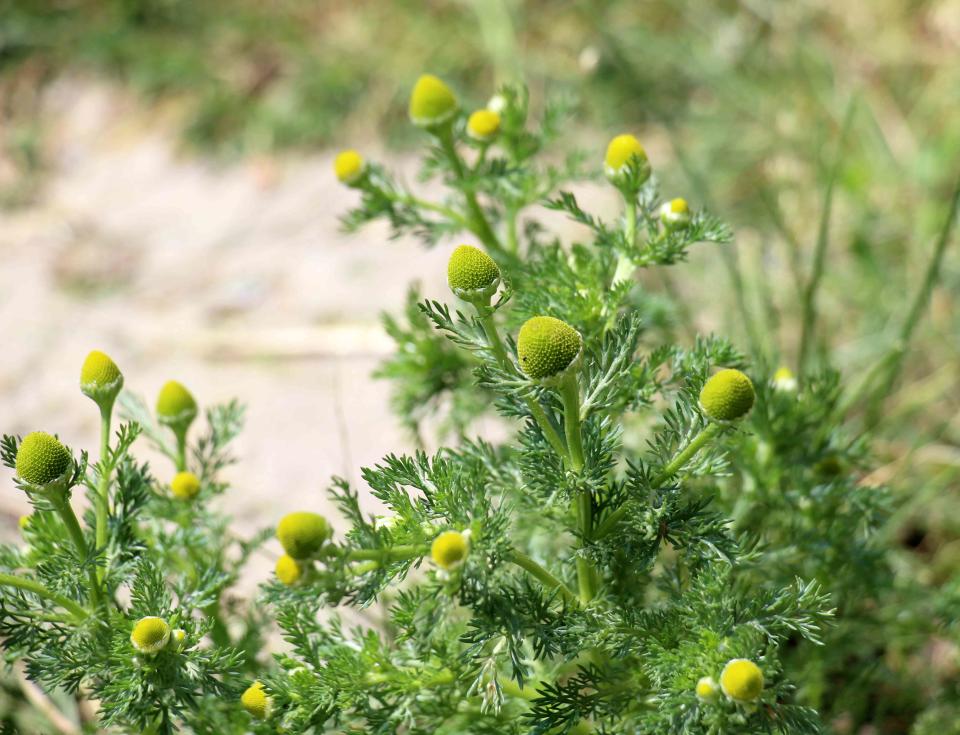
Orest Lyzhechka / Getty Images
Ground covers have many benefits in the landscape—they can choke out weeds, control erosion on slopes, fill in bare patches in your lawn, and bring beauty into your garden. Beyond these amazing practical and aesthetic pros, many ground covers also taste delicious and can be harvested and used in your cooking. From flowers that add color to meals and beverages to stems and leaves that make for great garnishes, the low-growing ground covers on this list are all edible and absolutely delicious.
Meet the Expert
Lisa M. Rose, expert forager and author of Urban Foraging: Find, Gather, and Cook 50 Wild Plants
Tama Matsuoka Wong, expert forager and author of Into the Weeds: How to Garden Like a Forager.
Related: 21 Weeds and Invasive Plants That Are Actually Delicious—Here's How to Use Them in Your Cooking
Alpine Strawberry
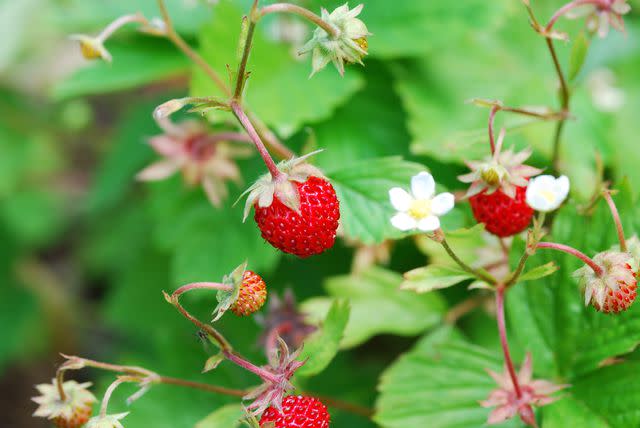
Cristofor Moldovanu / 500px / Getty Images
The wild alpine strawberry (Fragaria vesca) is a low-growing, herbaceous plant that's found in open fields and meadows. "The white flower clusters of the wild strawberry begin to bloom in late spring and give way to small, red strawberry fruit in early summer," says expert forager Lisa M. Rose, author of Urban Foraging: Find, Gather, and Cook 50 Wild Plants. "The leaves remain on the plant through the fall and turn a deep red color in autumn, helpful for off-season identification."
The berries ripen in mid to late June and can be enjoyed right off the bush. Intensify their flavor by turning them into jams, pies, cakes, or other baked goods.
Zone: 4 to 9
Height at maturity: 6 to 8 inches
Care requirements: Full sun to part shade; well-drained soil rich in organic matter
Warning
Before consuming wild plants, be sure to confirm their identification by using an official field guide or asking an expert.
Always wash before preparing, and be careful not to forage plants that have been exposed to herbicides, pesticides, or environmental pollutants.
Remember that some wild plants have medicinal properties; check with your healthcare provider to make sure there are no contraindications.
Wild Ginger
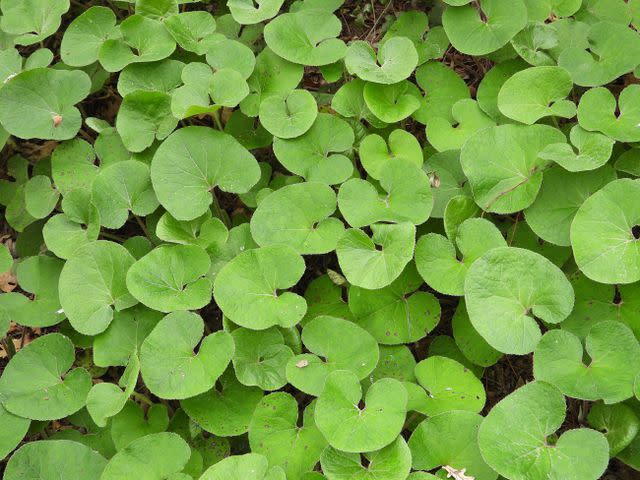
japatino / Getty Images
Different from culinary ginger, wild ginger (Asarum canadense) carpets early spring woods with its heart-shaped basal leaves and purple blooms, which emerge later in the season. The root of wild ginger, which runs between plants, is edible and has a unique acrid and spicy flavor that is somewhat similar to culinary ginger, says Rose.
The root of wild ginger can be made into a delicious simple syrup that can be used in cocktails, sodas, or desserts. "To make a warm spiced milk, boil the root in milk and then strain and sweeten the preparation with honey and cinnamon," says Rose. "The root can also be dried, roasted, and added in small quantities to a foraged chai blend to add an earthy, spicy layer."
Zone: 4 to 8
Height at maturity: 4 to 6 inches
Care requirements: Full sun to part shade; moist, well-drained soil rich in organic matter
Purslane
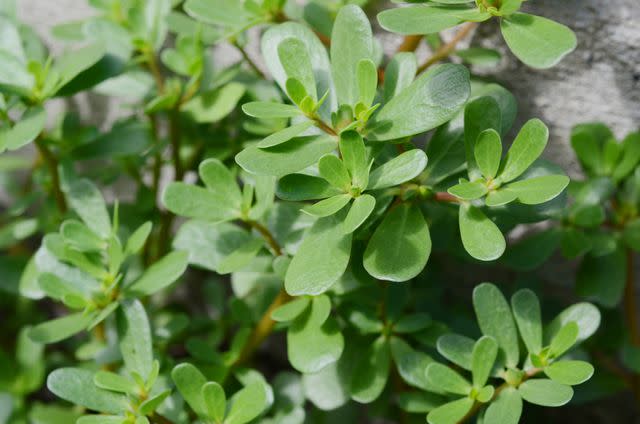
hongquang09 / Getty Images
Purslane (Portulaca oleracea) can be found all over, from fields and garden beds to gravel parking lots and sidewalk cracks. It pops up between June and August and can be identified by its round, fleshy, reddish stems and tiny yellow flowers that open in the morning, says Rose.
The leaves, stems, and flowers of purslane are edible. When the leaves and stems are crushed, the juice should be clear and watery—not a milky sap, which is one way to distinguish it from prostrate spurge (an inedible plant in the same habitat as purslane), says Rose.
Purslane is similar to bean sprouts in texture and lemony in flavor. It can shine on its own in a salad, but it's also a delicious addition to a variety of Asian dishes, like Thai-coconut soup, pad-Thai, or a hot bowl of pho, says Rose.
Zone: 2 to 11
Height at maturity: 6 inches
Care requirements: Full sun; well-drained soil
Wintergreen
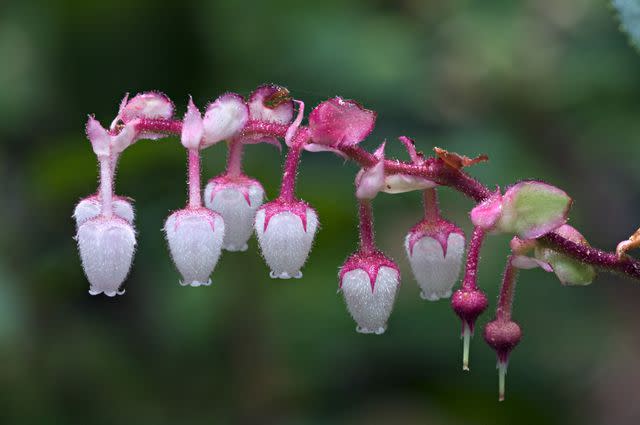
Ed Reschke / Getty Images
Wintergreen (Gaultheria procumbens) is a small evergreen perennial plant that grows in the maple hardwood forests. "Wintergreen has small, white, bell-shaped flowers that dangle below the leaves and bloom in early spring," says Rose. "The flowers give way to delicious small red berries in late May and early June. The leaves are aromatic of wintergreen when crushed, while the berries have a bright fruity smell."
The edible leaves and berries of wintergreen have many uses in the kitchen. "The leaves can be made into a simple syrup that can be used as a flavoring agent in desserts, such as ice cream, chocolate truffles, chocolate flourless cake, or mousse," says Rose. The berries have a light, fruity taste that can be dried for snacking or used fresh.
Zone: 3 to 8
Height at maturity: 6 inches
Care requirements: Full sun to part shade; acidic, moist, well-drained soil
Peppermint
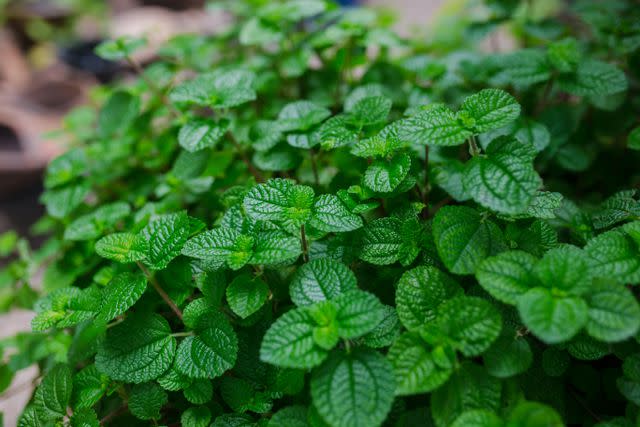
MR.WUTTISAK PROMCHOO / Getty Images
Peppermint (Mentha spp.) is a creeping perennial that has lance-shaped, toothed leaves and produces small, white to pale purple flowers in early summer. The plant is tender and more aromatic in mid-spring, then becomes rougher and spicier as the weather warms, says Rose. If growing in your garden, keep mint contained in pots as it can take over the landscape and compete with other plants for nutrients.
Freshly foraged peppermint leaves can be used in as many ways. "Toss the fresh peppermint into savory green salads, chilled bean salads, pasta salads, and rice dishes" says Rose. "Turn the fresh peppermint into a simple syrup for the cocktail cart, and use it in mixed drinks or for baking projects—or even to flavor peppermint ice cream."
Zone: 3 to 11
Height at maturity: 2 feet
Care requirements: Full sun to part shade; moist, well-drained soil
Violet
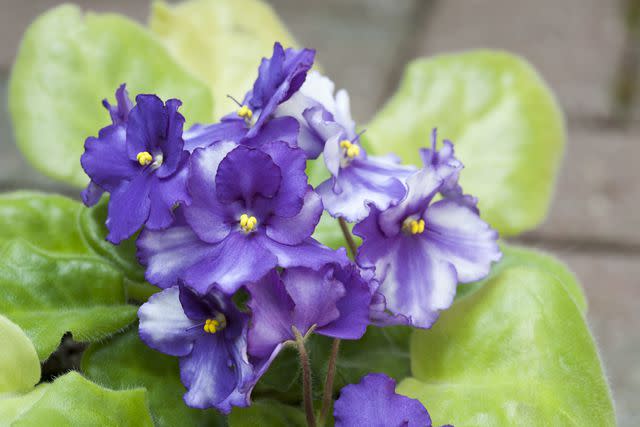
gladassfanny / Getty Images
Violet (Viola spp.) grows abundantly in the dappled shade of fields or in lawns of untreated grasses. "The violet begins to unfurl in early April and continues to grow and bloom through May," says Rose. "It begins to die back in summer and then reappears with another set of leaves to gather later in the fall."
The leaves and flowers of violet are edible. The leaves can be enjoyed as a raw vegetable with a bright and slightly lemon flavor. "Add them to a wild foraged salad or combine with chickweed to make a foraged green smoothie blend," says Rose. "The flowers are lovely as a garnish on salads." Alternatively, you can use the flowers to make a tea or simple syrup.
Zone: 3 to 9
Height at maturity: 3 to 8 inches
Care requirements: Full sun to part shade; moist, well-drained soil
Lemon Balm
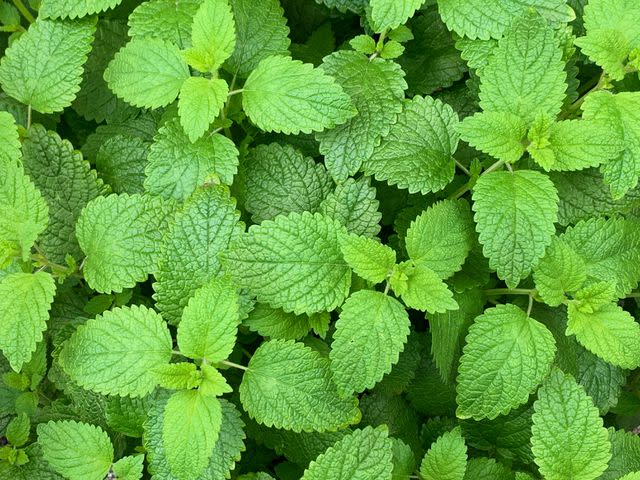
Getty Images
A perennial in the mint family, lemon balm (Melissa officinalis) is easily identified by its bright green, fuzzy heart-shaped leaves. "Lemon balm flowers in midsummer, producing whorled, white flower clusters that then bear small nutlets in late summer," says Rose. The plant, which loves the dapped sun at the edges of the woods, has a lemony scent reminiscent of citronella.
The edible leaves of spring are best to gather fresh for tea. "A hot tea of lemon balm is significantly more relaxing and more bitter than a cool infusion of the fresh plant," says Rose. You can also use lemon balm in brines and garnishes for light fish, pork, and chicken dishes. "In baking, lemon balm can be incorporated with herbs like lavender into light, buttery scones, and it also can be turned into an aromatic jelly," says Rose.
Zone: 4 to 9
Height at maturity: 3 to 5 feet
Care requirements: Full sun to part shade; moist, well-drained soil
Ground Ivy
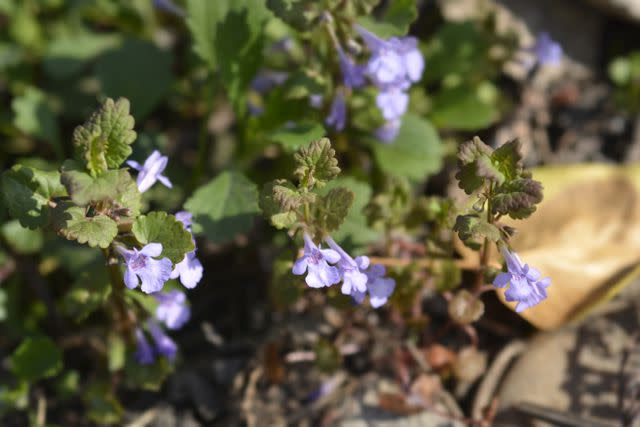
Nahhan / Getty Images
Ground ivy (Glechoma hederacea) is a common yard weed that can be irritating to those who want a perfectly manicured lawn. "For the forager, however, ground ivy has a pleasant aroma and is useful as a spring culinary herb as well as an herbal remedy," says Rose. It spreads by runners and has small heart-shaped leaves and purple flowers that bloom in late May.
The leaves are edible and have a fragrant minty scent when crushed. "Ground ivy, with its minty flavor profile, can be added fresh as a culinary herb to many dishes, including spring herb salads, spring rolls, spring soups, or fresh spring pesto of arugula," says Rose. "The fresh plant can be muddled like garden mint into a mojito."
Zone: 3 to 10
Height at maturity: 6 inches
Care requirements: Part shade; moist, well-drained soil
Watercress
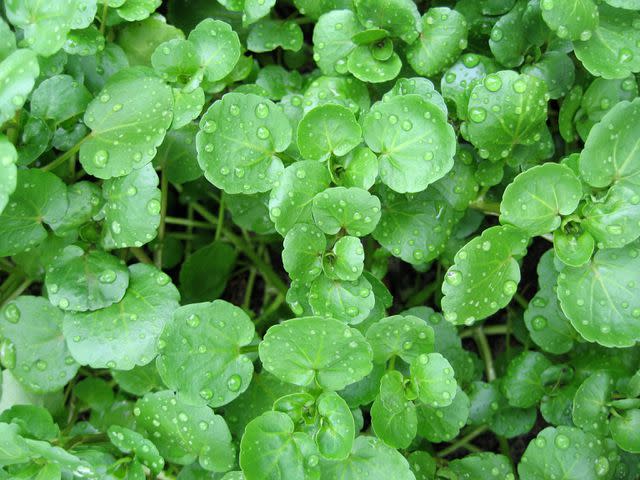
liewy / Getty Images
Watercress (Nasturtium officinale) is a perennial herbaceous plant with waxy compound leaves that are arranged in a basal rosette. "The stems are hollow, and the flowers appear as tiny, dense, white flower heads," says Rose. "Small white rootlets grow from the joints of stems, which float in the water."
The edible leaves are slightly bitter and have a peppery bite that works well in a deli-style sandwich or pita wrap. "In salads, watercress blends unusually well with fruits like avocado, watermelon, orange, and tangerine," says Rose. "Watercress is durable enough to cook and can be stir-fried with other early spring greens."
Zone: 5 to 9
Height at maturity: 12 inches
Care requirements: Part sun to full shade; moist soil
Gold Moss
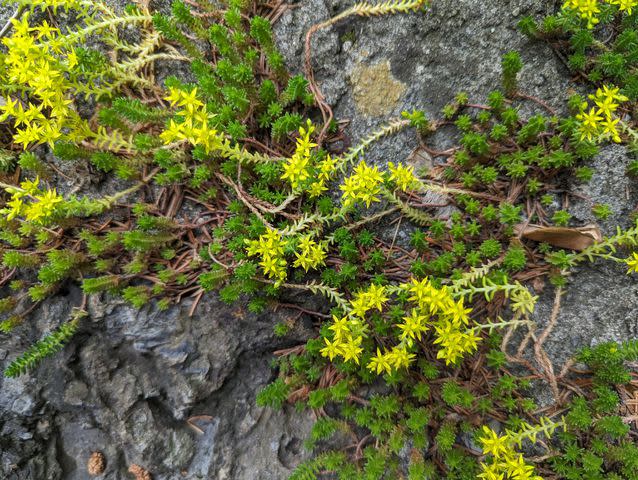
Renee Sherman / Getty Images
Gold moss (Sedum acre) is a low-growing, shallow-rooted, light green succulent that produces a carpet of cheerful yellow flowers. Also known as stonecrop, this ground cover is very hardy and drought-tolerant.
The tender leaves of gold moss are edible and can be enjoyed raw in a salad or on top of a soup to add a welcome crunch that's reminiscent of a crouton, says expert forager Tama Matsuoka Wong, author of Into the Weeds: How to Garden Like a Forager.
Zone: 3 to 11
Height at maturity: 3 to 5 inches
Care requirements: Full sun; moist, but not wet soil
Thyme
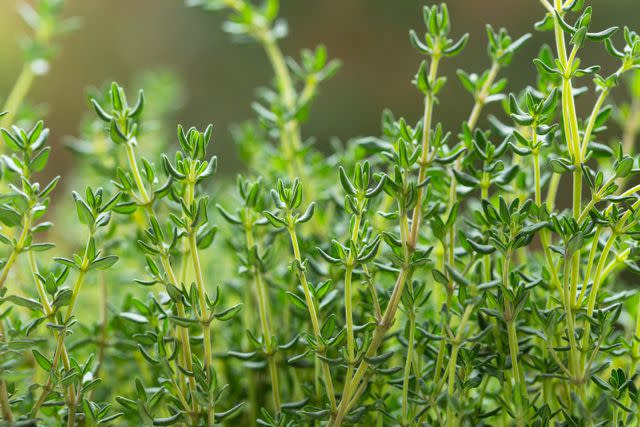
Yulia Naumenko / Getty Images
A few varieties of thyme are delicious to harvest for cooking, including French thyme, English thyme, or lemon thyme, says Wong. It has a low mat forming habit with woody, tiny leaves that grow opposite each other.
Harvest the top 3 to 5 inches of edible leaves when cutting a bunch. The aromatic herb is delicious for flavoring stews and pasta dishes. It can also be used to stuff a roast chicken, says Wong.
Zone: 3 to 5
Height at maturity: 3 to 5 inches
Care requirements: Full sun; moist, but not wet soil
Related: How to Grow and Care for Creeping Thyme—a No-Mow Alternative to Turf Grass
Pineapple Weed

Orest Lyzhechka / Getty Images
Pineapple weed (Matricaria discoidea) is indigenous to western North America and has been naturalized in the east, says Wong. This low-growing wild plant prefers driveways and gravel edges. It features finely dissected leaves and flower heads that look like a daisy with no petals.
When crushed, this plant has a faint pineapple aroma (hence its name). Use pineapple weed, also known as wild chamomile, in salads or infuse it in teas or syrups for its mild, tart, fruity flavor.
Zone: 3 to 9
Height at maturity: 2 feet
Care requirements: Full sun; gravelly soil
Oregano
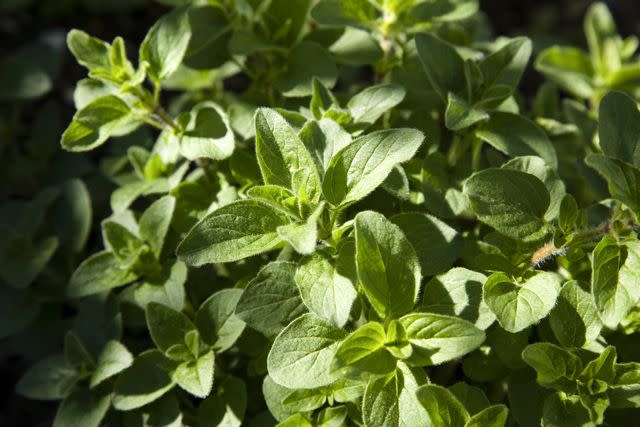
AYImages / Getty Images
Oregano (Origanum vulgare subsp. hirtum) is a common herb used to flavor many dishes. Instead of buying it from the grocery store, consider growing it in your garden as a ground cover. The plant has rounded- or oval-shaped leaves with a tip at the end and forms white to pinkish-purple flowers.
For cooking, use the leaves to add flavor to tomato sauce, pizza, and more, says Wong. "The flowers make a beautiful sweet color and can be very variable in color," she says.
Zone: 4 to 10
Height at maturity: 1 to 2 feet
Care requirements: Full sun; dry soil
Yarrow
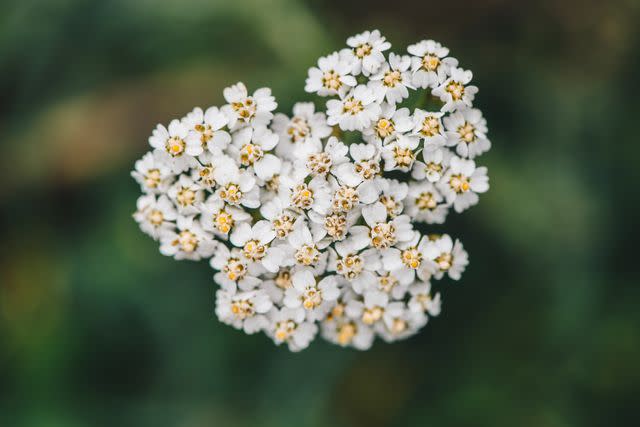
Emilija Manevska / Getty Images
Yarrow (Achillea millefolium) forms fuzzy, feathery, elongated leaves that boast beautiful, flat-topped white flower clusters in the summer. This ground cover can grow to be 1 to 2 feet tall if not mowed, says Wong.
To harvest, pick yarrow leaves while they're still very young and use sparingly in tea or chopped in salad with other greens to reduce its bitterness, she says.
Zone: 3 to 9
Height at maturity: 1 to 2 feet
Care requirements: Full sun; well-drained soil
Creeping Jenny
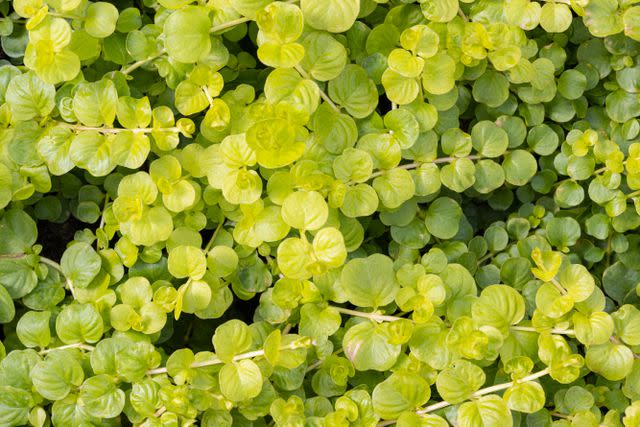
Andres Victorero / Getty Images
Creeping Jenny (Lysimachia nummularia) has trailing stems with light green round leaves and yellow flowers. It can be used to fill in the area between pavers and makes a great addition to hanging baskets.
You can eat the flowers and tender tips (not the stems) of creeping Jenny in spring. The tips have a taste that is reminiscent of peas, says Wong. The tips and flowers can be eaten raw and enjoyed in a fresh tomato mozzarella salad. In a salad, the flowers taste like coriander, says Wong.
Zone: 3 to 9
Height at maturity: 2 to 4 inches
Care requirements: Part shade; moist, but not yet soil
Read the original article on Martha Stewart.

